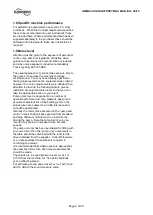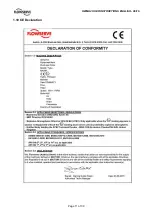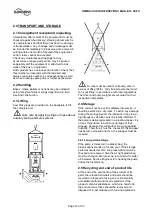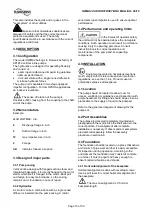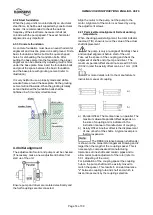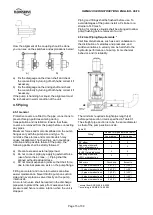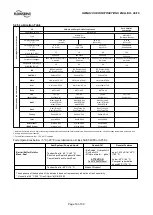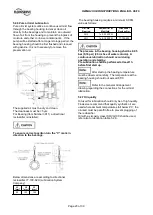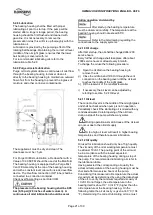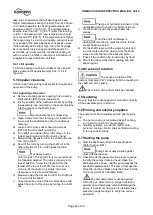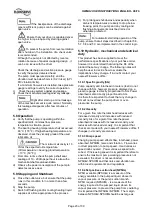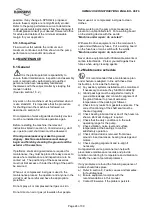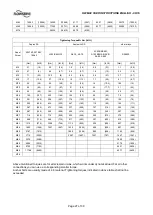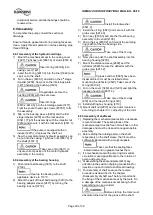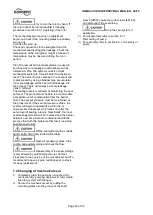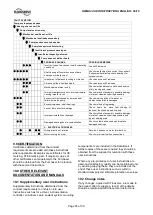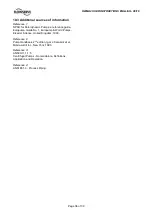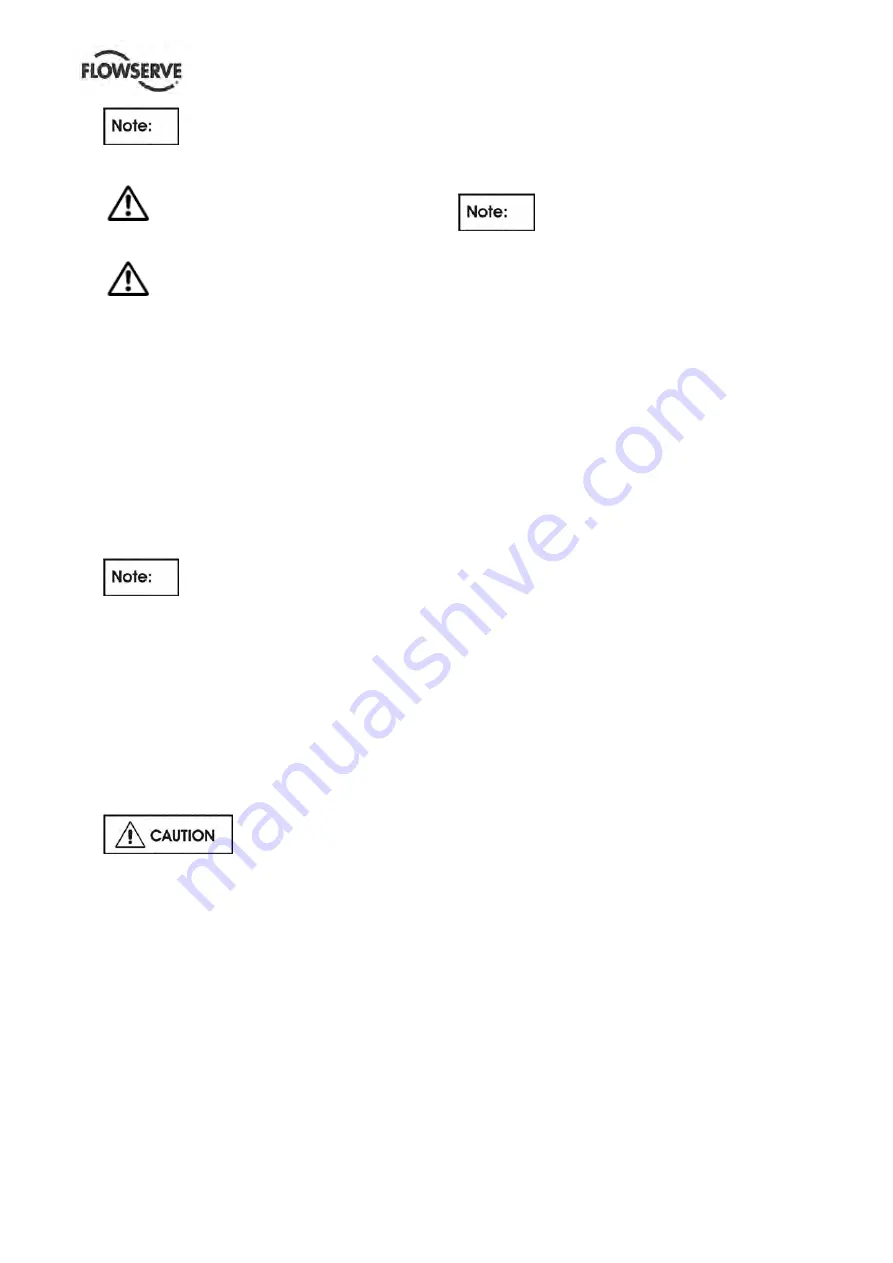
HWMA2 USER INSTRUCTIONS ENGLISH - 06/16
Page 23 of 39
If the backpressure of the discharge
pipe is sufficient, pumps can be started against
open valve.
Ensure that your driver is capable deliver
the higher torque required by starting against
open valve.
To prevent the pump from reverse rotation
after shut down, the installation of a check valve
is recommended.
Although the pump is not affected by reverse
rotation because of spezial couppling design , it
can be an issue with the driver.
Check the discharge and suction pressure gauge
to verify the pumps delivered head.
The pump must operate smoothly, and the
vibration must be below 5 mm/s (0.2 in./sec) (API
610 vibration limits).
If a minimum flow valve is installed, take pressure
gauge readings to verify the correct operation.
c) Check the pipe system against any leakage.
d) Check the mechanical seal against any leakage.
Right after start up a minor leakage
of the mechanical seal is quite normal. Normally
this leakage disappears after few minutes of
operation.
5.8 Operation
a) Verify that the pump is operating within the
specified limits, min/max flow, pressure,
temperature, vibration, power
b) The bearing housing temperature shall not exceed
80 °C (176 °F). If higher bearing temperature are
observed, check the viscosity grade of the used
lubrication oil.
The minimum viscosity is 10
cSt at the expected oil temperature.
(Oil temperature = bearing gland temperature
+ 10 °C (50 °F))
c) From time to time check the pump shaft seal.
Leakage of 10 - 20 drops per hour is also with a
mechanical shaft seal unavoidable.
d) Observe the power consumption of the pump to
detect excessive wear.
5.9 Stopping and Shutdown
a) Close the outlet valve, but ensure that the pump
runs in this condition for no more than a few
seconds.
b) Stop the pump.
c) Switch off flushing and/or cooling/ heating liquid
supplies at a time appropriate to the process.
d) For prolonged shut-downs and especially when
ambient temperatures are likely to drop below
freezing point, the pump and any cooling and
flushing arrangements must be drained or
otherwise protected.
For automatic start/stop operation of the
pump, ensure that all steps described in chapter 5.6,
5.7, 5.8 and 5.9 are implemented in the control logic.
5.10 Hydraulic, mechanical and electrical
duty
This product has been supplied to meet the
performance specifications of your purchase order,
however it is understood that during the life of the
product these may change. The following notes will
help the user to decide how to evaluate the
implications of any change. If in doubt contact your
nearest Flowserve office.
5.10.1 Specific gravity (SG)
Pump capacity and total head in meters (feet) do not
change with SG, however pressure displayed on a
pressure gauge is directly proportional to SG. Power
absorbed is also directly proportional to SG.
It is therefore important to check that any change in
SG will not overload the pump driver or over-
pressurize the pump.
5.10.2 Viscosity
For a given flow rate the total head reduces with
increased viscosity and increases with reduced
viscosity. Also for a given flow rate the power
absorbed increases with increased viscosity, and
reduces with reduced viscosity. It is important that
checks are made with your nearest Flowserve office if
changes in viscosity are planned.
5.10.3 Pump speed
Changing pump speed effects flow, total head, power
absorbed, NPSH
R
, noise and vibration. Flow varies
in direct proportion to pump speed. Head varies as
speed ratio squared. Power varies as speed ratio
cubed. If increasing speed it is important therefore to
ensure the maximum pump working pressure is not
exceeded, the driver is not overloaded,
NPSH
A
>NPSH
R
, and that noise and vibration are
within local requirements and regulations.
5.10.4 Net positive suction head (NPSH
A
)
NPSH available (NPSH
A
.) is a measure of the
energy available in the pumped liquid, above its
vapour pressure, at the pump suction branch.
NPSH required (NPSH
R
.) -
is a measure of the
energy required in the pumped liquid, above its
vapour pressure, to prevent the pump from cavitating.
It is important that NPSH
A
>NPSH
R.
The margin
between NPSH
A
>NPSH
R
should be
as large as

